Penn will take the main stage alongside United Airlines’ Chief Advertising Officer Maggie Schmerin and 72andSunny’s Global CEO Evin Shutt
“The Human Touch: Creativity Can’t Be Automated” to run on Innovation Unwrapped track at Cannes Lions International Festival of Creativity
NEW YORK, June 10, 2025 /PRNewswire/ — Stagwell (NASDAQ: STGW), the challenger network built to transform marketing, today announced Chairman and CEO Mark Penn will take the main stage at the 2025 Cannes Lions International Festival of Creativity, the advertising world’s most esteemed awards and celebration, to present “The Human Touch: Creativity Can’t Be Automated.”
Penn’s presentation on the value of human creativity in an industry becoming increasingly automated builds on his four decades of experience at the intersection of technology and creativity.
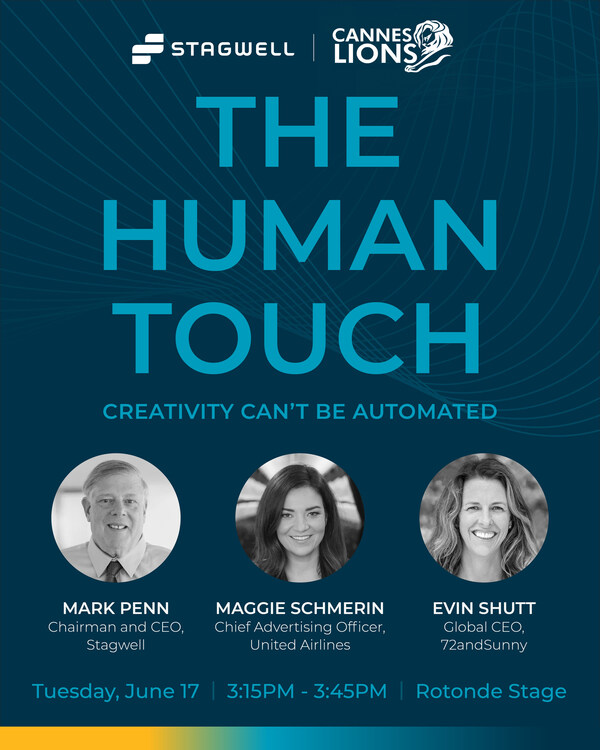
The Human Touch: Creativity Can’t Be Automated
Cannes Lions | Rotonde Stage, Rotonde | Tuesday, June 17, 3:15 PM CEST
Join this session where leaders from Stagwell, United Airlines, and 72andSunny will prove that the secret to breakthrough branding lies in blending cutting-edge technology with the irreplaceable power of human creativity. You’ll learn how to turn data into story-driven insights, build culturally resonant messages that stick, and avoid the creative rut when relying too heavily on automation. Featured speakers will share frameworks, lessons and creative tactics for marketers ready to lead with boldness and originality.
Featuring:
- Maggie Schmerin, Chief Advertising Officer, United Airlines
- Evin Shutt, Global CEO, 72andSunny
- Mark Penn, Chairman and CEO, Stagwell
Elsewhere around Cannes, Penn will present:
Hard Truths, Real Results: How News Unlocks Advertising ROI
WSJ’s Journal House | Monday, June 16, 4:15 PM CEST
Forget the fear. Explore how brands are finding success by aligning with credible journalism—even in challenging news environments. This session shares real, data-driven stories and practical strategies that reveal the untapped potential of advertising alongside hard news. Gain insights and confidence to approach this space with fresh perspective and informed creativity. Featuring:
- Jeff Green, CEO, The Trade Desk
- Phillipa Leighton – Jones, SVP, The Trust, WSJ | Barron’s
- Tracy-Ann Lim, Chief Media Officer, JPMorgan Chase & Co.
- Mark Miller, Chief Strategy Officer, Team One
- Mark Penn, Chairman and CEO, Stagwell
Business of Sport Fireside Chat
Private Dinner hosted by Bloomberg Media | Monday, June 16, 8:30pm CEST
Bloomberg Media is hosting an invite-only dinner for key clients and partners. The gathering will featuring a fireside chat led by Mishal Husain, Editor-at-Large of Bloomberg Weekend with Mark Penn, Chairman and CEO of Stagwell, and Olympic gold medalists Tara Davis-Woodhall and Hunter Woodhall. They will explore how sports can open the door to conversations shaping today’s business landscape.
Featuring:
- Tara Davis-Woodhall, Olympic Gold Medalist & 2024 World Champion
- Hunter Woodhall, Paralympic Gold Medalist & three-time Paralympian
- Mishal Husain, Editor at Large, Bloomberg Weekend
- Mark Penn, Chairman and CEO, Stagwell
Future of News: Why News Junkies are the Real MVPs
SPORT BEACH | Wednesday, June 18, 1:00 PM CEST
News is the future – and we’re bringing new data to prove it. Join us for a C-Suite conversation unpacking the business case for investing in the high-quality media environments of news. Spoiler alert: if you’re not including “news junkies” in your media strategy, you’re missing some of your most engaged and influential consumers. Featuring:
- Meredith Kopit Levien, CEO, The New York Times
- Almar Latour, CEO, Dow Jones
- Tracy-Ann Lim, Chief Media Officer, JPMorgan Chase & Co.
- Mike Reed, CEO, Gannet | USA Today Network
- Mark Penn, Chairman and CEO, Stagwell
Stagwell
Stagwell is the challenger holding company built to transform marketing. We deliver scaled creative performance for the world’s most ambitious brands, connecting culture-moving creativity with leading-edge technology to harmonize the art and science of marketing. Led by entrepreneurs, our specialists in 45+ countries are unified under a single purpose: to drive effectiveness and improve business results for our clients. Join us at www.stagwellglobal.com.
Press Contact
Maggie Axford
PR@stagwellglobal.com
U.S. CEOs strongly favor former President Donald Trump over Vice President Kamala Harris to boost the global economy, while Global CEOs are split
Stagwell Chairman and CEO Mark Penn to reveal the results of the survey on stage at Future Investment Initiative (FII) 8th Edition in Riyadh
NEW YORK, Oct. 30, 2024 /PRNewswire/ — Stagwell (NASDAQ: STGW) today unveiled the results of a global survey of 100 CEOs regarding their priorities for 2025, reflections on how the U.S. presidential election will impact economic and political stability, and interest in investing in the Gulf Region.
This afternoon, October 30 at 1:40pm Saudi time Stagwell Chairman and CEO Mark Penn will present these findings at the Future Investment Initiative (FII) 8th Edition 2024 Summit in Riyadh as part of Stagwell’s strategic investment in the MENA region.

The survey, conducted by Stagwell’s NRG, a leading global insights and strategy firm at the intersection of content, culture, and technology, reveals:
Expected Impact of the U.S. Election on Business
- 77% of CEOs say the U.S. presidential election will impact their 2025 business strategy.
- Global CEOs (all CEOs surveyed minus U.S. CEOs) are split on which Presidential candidate would boost the global economy (35% of global CEOs selected Harris while 30% selected Trump), while U.S. CEOs strongly favor Trump to boost the global economy (52% vs. 15%).
- CEOs expect trade policy and immigration to be strongly influenced by the election.
- Broadly aligned with the general population, 35% of CEOs worldwide identify inflation as the most critical economic issue facing their countries, followed by boosting consumer confidence (30%) and energy prices (25%).
Attractiveness of Investing in the Gulf Region
- Global CEOs view both the Gulf Region and Kingdom of Saudi Arabia as attractive investment markets.
- 79% of global CEOs describe the current investment environment in the Gulf region as very or somewhat attractive, while 86% say the same about the Kingdom of Saudi Arabia.
Optimism for Technology and AI
- 85% of CEOs are optimistic about innovation and technology as a force for improving life quality.
- 73% of global CEOs are optimistic about the impact of AI on the wellbeing of citizens in their country, including 35% who are ‘very optimistic.’
Survey Methodology
This survey, built on the 2024 FII Institute Compass survey, gathered insights from CEOs on key issues affecting their countries, focusing on economic priorities for 2025. The survey was conducted exclusively in English between October 4th and 11th, 2024 among a global sample of 100 CEOs of companies with a minimum of 10,000 employees, which was drawn from expert network sample lists. Explore the crosstabs and additional findings.
About Stagwell
Stagwell (NASDAQ: STGW) is the challenger network built to transform marketing. We deliver scaled creative performance for the world’s most ambitious brands, connecting culture-moving creativity with leading-edge technology to harmonize the art and science of marketing. Led by entrepreneurs, our specialists in 34+ countries are unified under a single purpose: to drive effectiveness and improve business results for their clients. Join us at www.stagwellglobal.com.
About National Research Group
National Research Group is a leading global insights and strategy firm at the intersection of content, culture, and technology. The world’s most innovative brands turn to us for insights into growth and strategy for any experience, anywhere, on any device.
Contact
Kara Gelber
PR@stagwellglobal.com
Related
Articles
In the News, Investments & Financials, Press Releases, Talent & Awards
Jul 08, 2025
Stagwell (STGW) Advances Executive Team with Four Key Appointments

In the News, Press Releases, Thought Leadership
Jun 10, 2025
Stagwell (STGW) Chairman and CEO Mark Penn to Discuss the Irreplaceable Power of Human Creativity on the Main Stage of Cannes Lions

Events, In the News, Press Releases, Talent & Awards
Jun 05, 2025
Code and Theory Named ANA B2B Agency of the Year After Transforming the World’s Leading Brands

Newsletter
Sign Up
CONTACT
hello@stagwellglobal.com
SIGN UP FOR OUR INSIGHTS BLASTS
“To me, there’s no tighter relationship between gaming and sports,” says Craig Elimeliah, Chief Creative Officer of Code and Theory. While sports took center stage at the Cannes Lions International Festival for Creativity, and Stagwell’s SPORT BEACH, it’s clear from dozens of our interviews with senior marketers that gaming is also on the world leaderboard and becoming an essential platform for reaching digital-first consumers.

Everyone’s a Player
While the concept of a “gamer” conjures up the archetypical image of an teenage boy, 50% of people who identify as gamers today are women, Activision Blizzard’s Claire Nance reminded marketers on stage at SPORT BEACH. To counteract this pervasive stereotype, Nance suggests redefining “gamer” as “player,” a more comprehensive term she says better reflects the heterogenous gaming demographic. As gaming technology advances and becomes more accessible, the barriers to entry, such as the need to purchase an expensive console, no longer exist, enabling more people to pick up gaming and become “players,” further diversifying the gaming audience.
The Rise of the Gaming Generation
As younger generations age, gaming has evolved from a niche hobby to an essential part of the modern entertainment mix and a nascent platform for advertisers. Yet, “we’re still not seeing brands and agencies lean in [to gaming] with as much focus as we would expect,” notes Brad Simms, CEO and President of GALE, whose agency has helped companies like MilkPEP and Bomb Pop reach untapped consumers through gaming. There are 3.4 billion unique gamers globally.
Why has gaming become so pervasive? Nance says a generational shift is underway. “When you look at geriatric millennials, this is the first generation that really grew up with gaming as a kid and has taken it through into life and into adulthood. As geriatric Millennials and GenX are starting to have children, they’re introducing gaming to their kids.”
Leveling Up to Immersive Experiences
“As a device guy I’ll tell you that experiential gaming is the future,” says Ajit Sivadasan, Global Head of Online Sales, Digital Marketing & Platform at Lenovo. Not too long ago we witnessed a massive shift in gaming from the 2D world to the 3D world. Now, immersive experiences are all the rage, bridging the physical world with the digital world in ways previously unimaginable. Gaming is the optimal platform to integrate AR, VR, and XR technologies, creating an interactive and hyper-realistic universe for gamers to engage with and explore. The technology is advancing rapidly. Itamar Benedy, CEO and Co-Founder of Anzu, believes that “in 5 years from now, people will move most of their internet-based interactions to a 3D World.” Thus, now is the time for brands and marketers to not only embrace gaming, but to become early adopters of these immersive technologies, shaping the future of this evolving industry and capturing the attention of consumers globally.
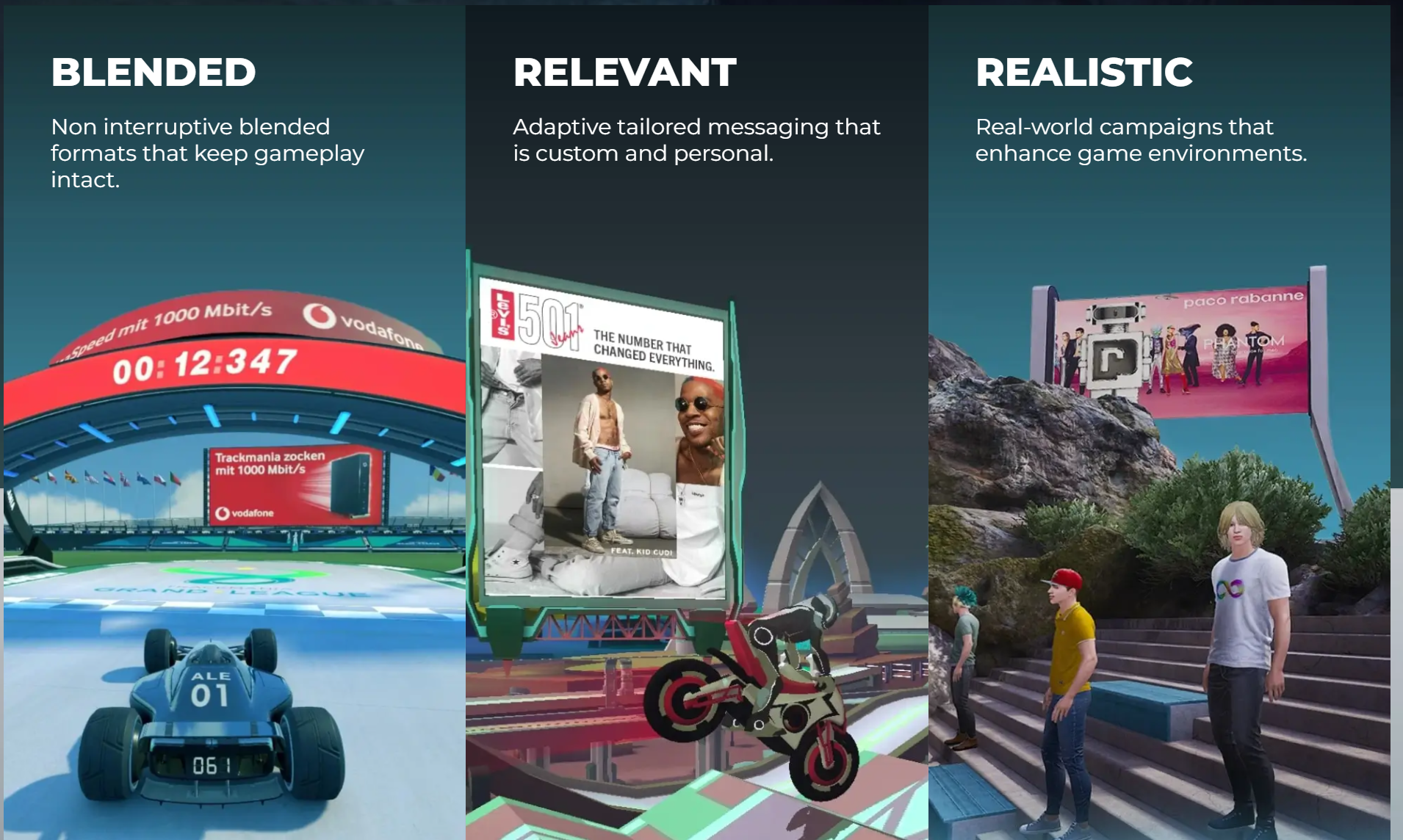
Creative Excellence Across In-Game Advertising Scores High
“Gaming is a place where ads should not be disruptive…they should actually be additive to the experience part of the game,” Elimeliah notes. Companies like Stagwell and Anzu are transforming the in-game advertising experience for players, ensuring that ads are immersive and creative.
Anzu, in partnership with Stagwell, recently shared insights into creative best practices for intrinsic in-game advertising, where following these practices can significantly enhance brand lift performance and drive brand awareness. “This research shows that non-intrusive and authentic ads can captivate attention and enrich the gaming experience, but only if approached in the right way and with an appreciation for how the gaming audience prefers to interact with brands,” says David Sable, Vice Chair of Stagwell.
Creative excellence is essential to the marketing around gaming as well. For the launch of Blizzard Entertainment’s Diablo IV, 72andSunny created “Cathedral of Diablo,” a dramatic and cinematic campaign featuring a 160-foot-long mural of Diablo scenes painted across the interior of a French Gothic cathedral. “It’s a different world now than when it was when I first started doing video game advertising. There was a time when you would put out a 15-second trailer for a niche market,” says Tim Wolfe, Group Creative Director of 72andSunny. “Slowly and steadily, as gaming itself became more mainstream, its communications became more mainstream, advanced and crafted.”
It's Game Time
Stagwell recently launched a strategic gaming partnership with Anzu designed to help brands transform the in-game advertising experience. Interested in breaking into immersive gaming experiences? Reach out to hello@stagwellglobal.com.
Related
Articles
In the News, Press Releases
Jul 09, 2025
STAGWELL LAUNCHES STAGWELL MEDIA PLATFORM (SMP), A CENTRALIZED TEAM OF GLOBAL MEDIA, TECHNOLOGY AND DATA INVESTMENT EXPERTS

Artificial Intelligence, In the News, Marketing Frontiers, Press Releases, Stagwell Marketing Cloud, Tech
Jun 12, 2025
PRophet, a Stagwell (STGW) Company, Completes Integration of UNICEPTA, Launches Unified Brand and Enhanced Media Intelligence Offering

In the News, Marketing Frontiers, Press Releases, Stagwell Marketing Cloud, Tech
Jun 11, 2025
The Marketing Cloud Launches Cutting-Edge Platform to Simplify Marketing Workflows
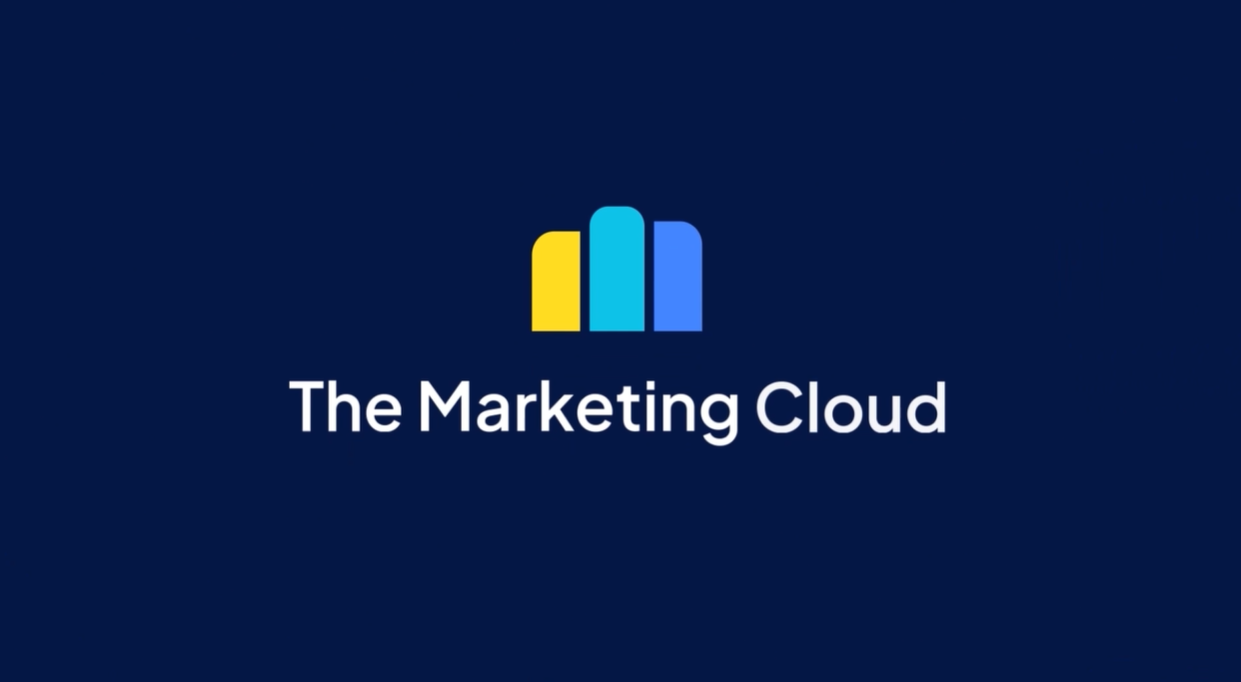
Newsletter
Sign Up
Stagwell brought the Future of News to Cannes Lions, where our recent study showing that it’s safe for brands to advertise in the news was “the talk of the town,” according to Andrew Ross Sorkin in The New York Times’ DealBook and on CNBC’s “Squawk Box.” In the June edition of Hitting the Mark, I’m bringing you the Cannes highlights of all things Future of News, including insights from my interview with Business Insider; a Future of News panel featuring the CEOs of The New York Times, CNN, and Business Insider; and a Business of News panel featuring the CROs of top publishers.
As a recap, Stagwell’s landmark 50,000-person News Advertising Study, released in May, found that 1 in 4 Americans are news junkies — an audience whom advertisers are not capitalizing on. We showed that brand safety concerns — the idea that brands will suffer if their ads appear next to the “wrong” story — were unfounded: Americans don’t judge brands based on what news stories their ads appear next to.
I brought our findings to CMOs of the world’s biggest brands and news executives at Cannes this month. Four overarching themes emerged across our discussions:
- News junkies are an under-tapped, highly desirable, and wide-ranging audience. As I told Business Insider, if you’re not advertising in news, you’re probably not targeting your optimal consumers, so you’re probably not maximizing the benefit you can get out of your budget. News junkies are curious and persuadable individuals who come to the news with wide interests, ranging from cooking and games to fashion and sports.
- The vicious cycle of brands abandoning news is harming democracy. At the end of the day, news runs on business models. But because of brand safety apprehension, brands don’t advertise on news, news revenue declines, news quality worsens, and democracy suffers. Instead, advertisers need to start a “virtuous cycle” of investing in the news, as I wrote about in The Current. In the Sport Beach Content Studio, Dow Jones CRO Josh Stinchcomb talked about concrete ways to feed this virtuous cycle, such as convincing brands to move away from extensive, outdated blocklists.
- The news business has to be global. On the Sport Beach mainstage panel about Future of News, the CEOs of top publishers discussed the strength of having a global audience and why they are investing in their international coverage as a competitive advantage. In the same vein, we are planning to bring our Future of News research and studies around the world, with London up next.
- Integrating AI into journalism can help both news and brands target audiences even more effectively. Just like everyone else, newsrooms are tackling AI, and publisher CEOs spoke at Sport Beach about the ways they are implementing it: from an AI-enabled paywall at Business Insider to an AI-powered ad product designed to target consumers beyond first-party data at The New York Times. Stagwell agencies are already at the forefront of helping newsrooms with this AI reinvention. Code and Theory, which was just named ANA’s B2B Agency of the Year, is building expertise in this area with major projects such as designing and engineering NBC’s “Big Board” — a reliable, data-driven storytelling device depicting the nation’s political landscape in real time.
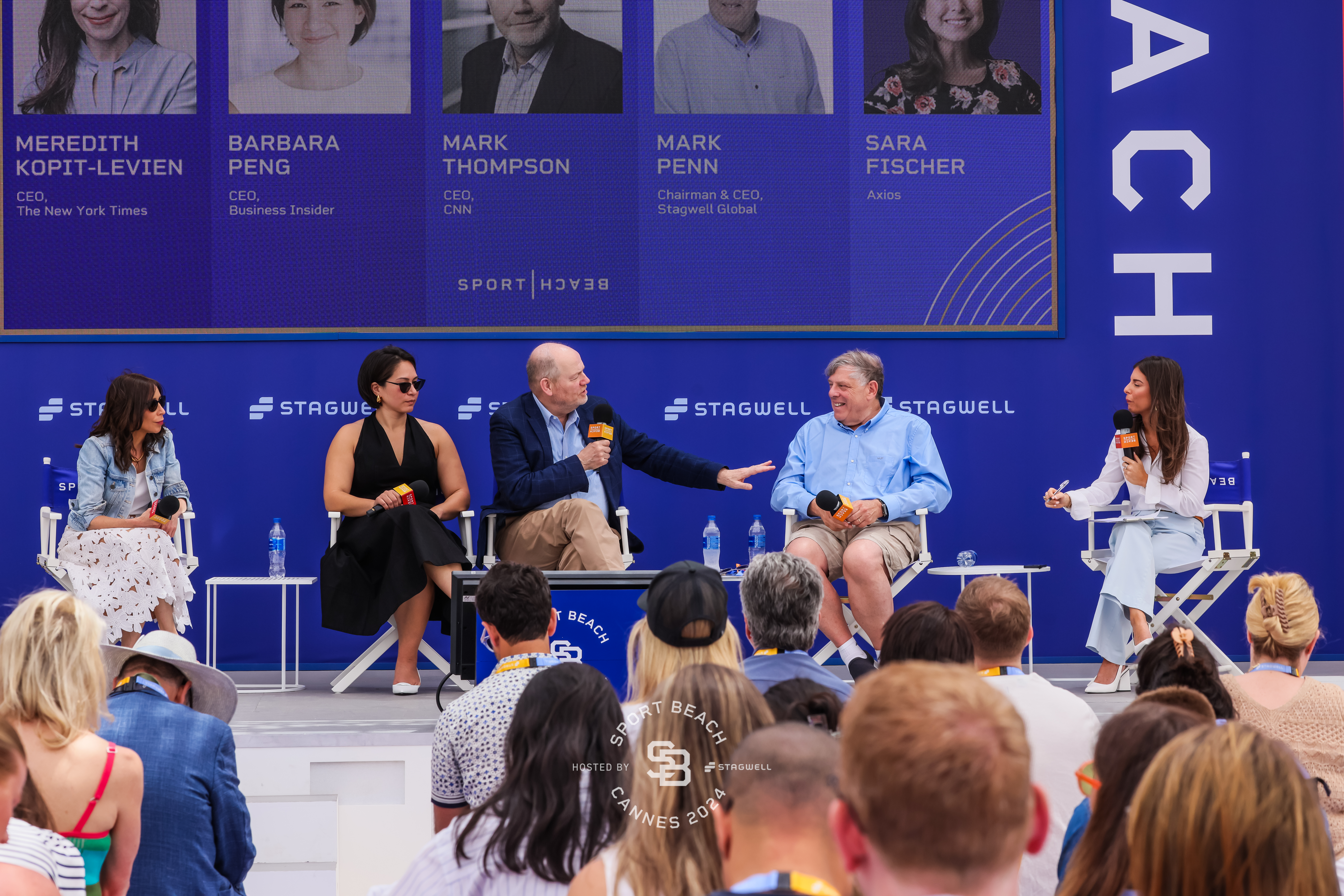
Coming out of Cannes, the future of news is clear: advertisers have a unique opportunity to target a curious, cream-of-the-crop audience, and AI will only augment reach.
The responsibility to invest in democracy is urgent: free, independent journalism is under ongoing attack. Just this week, The Wall Street Journal reporter Evan Gershkovich appeared in court for the start of an illegitimate and secret trial after 15 months of wrongful detention in Moscow. Share this letter from the Journal’s editor in chief to help elevate Evan’s story until he can tell his own.
We would love to have you on board our follow-up studies and summits as Future of News expands across the globe. Reach out to partner with the Stagwell team, and as always, please don’t hesitate to connect with any thoughts or questions.
Until next time,
Mark Penn
Related
Articles
In the News, Press Releases
Jul 09, 2025
STAGWELL LAUNCHES STAGWELL MEDIA PLATFORM (SMP), A CENTRALIZED TEAM OF GLOBAL MEDIA, TECHNOLOGY AND DATA INVESTMENT EXPERTS

In the News, Investments & Financials, Press Releases
Jul 08, 2025
Stagwell (STGW) Schedules Webcast to Discuss Financial Results for the Three Months Ended June 30, 2025

In the News, Investments & Financials, Press Releases, Talent & Awards
Jul 08, 2025
Stagwell (STGW) Advances Executive Team with Four Key Appointments

Newsletter
Sign Up
CONTACT
hello@stagwellglobal.com
SIGN UP FOR OUR INSIGHTS BLASTS

As we reflect on the Cannes Lions International Festival of Creativity, it’s evident that while technology evolves, creativity remains the linchpin. Despite AI’s buzz on the Croisette, the actual impact in the Lions’ jury rooms was minimal. The focus instead was on diverse marketing transformations—from hidden consumer forces reshaping business strategies, to sports’ role in brand-building, to the power of entertainment-led advertising.
Whether you’re winding down from the excitement of Stagwell’s SPORT BEACH or you’re absorbing Cannes’ big ideas from home, here are Three Quick Things you need to know. Find more Cannes insights here and here.
- YOU CAN’T SPELL BUSINESS TRANSFORMATION WITHOUT CREATIVITY: The future of the CMO is always a hot topic at Cannes. Marketing leaders are tasked with driving initiatives as impactful as their C-Suite peers. Good news—CMOs’ creative problem-solving skills equip them well. Emerging from the Creative Business Transformation jury room, Michael Treff, CEO of Code and Theory, emphasizes: “Business transformation must work across most company functions, or it isn’t truly transformation.” Looking ahead, Treff says marketers will miss out if they assume AI is the only opportunity for business transformation. “There are seismic changes in human behaviors happening…and ontological questions for a lot of businesses in categories that are going through disruption. What is the meaning of a financial services institution? What is the role of institutional education? What is the future of media?” Hear more from Treff here.
- ATHLETES AS RENAISSANCE ENTREPRENEURS: “As an athlete, I was always being told to just play basketball,” said NBA All-Star Carmelo Anthony at Stagwell’s SPORT BEACH, discussing the challenges of breaking into the exclusive wine and spirits industry. Now, “I’m kicking the door down and saying…give us a chance, let us come in and be creative, and let’s make magic.” Athletes like Anthony are diversifying into industries such as fashion, media, and philanthropy, proving pivotal in creating new economic opportunities. “We’re not made to be one-dimensional, we’re human – we’re made to do so many things,” said LSU Tigers basketball star and rapper, Flau’jae Johnson. Athletes are not just being sponsored by brands; they’re shaping them, suggests alpine skier and Olympian Mikaela Shiffrin, who advised brands on stage that equity-based collaborations are “one of the most surefire ways to create a really authentic connection and partnership” with this new class of renaissance entrepreneurs. But don’t just chase the biggest names. Both Johnson and Mark Kirkham, CMO of Pepsi International, spoke on stage about the need for more “grassroots” partnerships, or brands partnering early with up-and-coming stars. Watch all sessions from SPORT BEACH here.
- DEBUNKING MARKETING’S EMERGING TECH PROBLEM: “Entertainment is a reflection of culture,” says GALE Managing Director, Creative and Entertainment Lions Jury President Geoff Edwards. So as culture changes and moves, so entertainment changes and progresses, and the category evolves as well. With consumers rebelling against intrusive ads, the focus on branded entertainment at Cannes has been on the rise in recent years. “But getting entertainment right requires more than being entertaining,” Edwards reminds us. Successful entertainment finds narratives that are captivating and uniquely convey the brand’s message. And the impact of technology in this realm is profound, with each year introducing new platforms, partnerships, and ways to experience content. “When it’s done well, [entertainment] is the most powerful force on Earth. Plus, it changes every year, because the entertainment industry changes every year. Technology, film, episodic, documentary, live experiences, gaming and music make this an exciting and interesting category.” Learn more from Geoff here.

ALL THE ACTION, NONE OF THE SWEAT
Relive every moment from Stagwell’s SPORT BEACH at the Cannes Lions International Festival of Creativity – without moving an inch. Stream mainstage sessions and interviews from the Content Studio on YouTube here.
Related
Articles
In the News, Press Releases
Jul 09, 2025
STAGWELL LAUNCHES STAGWELL MEDIA PLATFORM (SMP), A CENTRALIZED TEAM OF GLOBAL MEDIA, TECHNOLOGY AND DATA INVESTMENT EXPERTS

Artificial Intelligence, In the News, Marketing Frontiers, Press Releases, Stagwell Marketing Cloud, Tech
Jun 12, 2025
PRophet, a Stagwell (STGW) Company, Completes Integration of UNICEPTA, Launches Unified Brand and Enhanced Media Intelligence Offering

In the News, Marketing Frontiers, Press Releases, Stagwell Marketing Cloud, Tech
Jun 11, 2025
The Marketing Cloud Launches Cutting-Edge Platform to Simplify Marketing Workflows

Newsletter
Sign Up
“The Contrarian’s Compass: Navigating Emerging Tech Hype” to run on the Innovation Track at Cannes
NEW YORK, June 14, 2024 /PRNewswire/ — Stagwell (NASDAQ: STGW), the challenger network built to transform marketing, today announced Chairman and CEO Mark Penn will take the main stage at Cannes Lions, the most prestigious awards show and festival in advertising, to present “The Contrarian’s Compass: Navigating Emerging Tech Hype”.

Penn’s keynote presentation on how marketers can navigate emerging technology to fuel brand growth will draw on his four decades of leadership across technology, marketing, and political organizations. As Microsoft’s former Chief Strategy Officer, Penn led a team to revitalize Bing, the company’s search engine, and conceived of and led successful initiatives like Microsoft’s award-winning Super Bowl 2014 ad “Empowering Us All.” Today, as Chairman and CEO of Stagwell, Penn has built the only global marketing services organization boasting majority digital revenue. At Stagwell, he launched the Stagwell Marketing Cloud, a suite of SaaS and DaaS solutions spanning AI-enabled research, media, PR, and advanced media products in spaces such as augmented reality.
On the Cannes main stage, Penn will discuss:
The Contrarian’s Compass: Navigating Emerging Tech Hype
Join Penn as he reveals how nonconformist thinking can help brands navigate the complex landscape of today’s tech trends and find genuine ways to innovate, avoiding the traps that hinder long-term growth. Get practical advice for incorporating emerging tech into the brand creative mix.
Cannes Lions | Rotonde Stage, Rotonde | Monday, June 17, 4:45 PM CEST
Off the Mainstage
Penn will make several other appearances at Cannes Lions, including at Stagwell’s flagship sports business destination SPORT BEACH, to speak about the future of news and the balance between data privacy and consumer empowerment:
Future of News: Why News Audiences Matter as Much as Sports Junkies
News is the future – and represents a unique and complementary platform for brands to drive business results. How are news media preparing for the next thirty-six months? A C-Suite conversation discussing the path forward and opportunities ahead for journalists, brands and news junkies. Featuring:
- Meredith Kopit-Levien, CEO, The New York Times
- Barbara Peng, CEO, Business Insider
- Mark Thompson, CEO, CNN
- Moderated by Mark Penn, Chairman and CEO, Stagwell, and Sara Fischer, Axios
SPORT BEACH | Wednesday, June 19, 12:30 PM CEST
Empowering Consumers in a Data Driven World
Join industry leaders in an exploration of data privacy, consumer expectations, and the impacts of technology innovation. Gain a deeper understanding of how to build trust and propel innovative marketing strategies within the ever-evolving digital landscape. Featuring:
- Navaneeta Das Skinner, Global Client Lead, Publicis
- Eva Simone Lihotzky, GM AI Hub, Serviceplan Group
- Mark Penn, Chairman & CEO, Stagwell
- Elaine Rodrigo, Chief Insights & Analytics Officer, Reckitt
Microsoft Beach House | Monday, June 17, 1:00 PM CEST
About Stagwell
Stagwell (NASDAQ: STGW) is the challenger network built to transform marketing. We deliver scaled creative performance for the world’s most ambitious brands, connecting culture-moving creativity with leading-edge technology to harmonize the art and science of marketing. Led by entrepreneurs, our 13,000+ specialists in 34+ countries are unified under a single purpose: to drive effectiveness and improve business results for their clients. Join us at www.stagwellglobal.com
CONTACT:
Sarah Arvizo
pr@stagwellglobal.com
Related
Articles
In the News, Investments & Financials, Press Releases, Talent & Awards
Jul 08, 2025
Stagwell (STGW) Advances Executive Team with Four Key Appointments

In the News, Press Releases, Thought Leadership
Jun 10, 2025
Stagwell (STGW) Chairman and CEO Mark Penn to Discuss the Irreplaceable Power of Human Creativity on the Main Stage of Cannes Lions

Events, In the News, Press Releases, Talent & Awards
Jun 05, 2025
Code and Theory Named ANA B2B Agency of the Year After Transforming the World’s Leading Brands

Newsletter
Sign Up
CONTACT
hello@stagwellglobal.com
SIGN UP FOR OUR INSIGHTS BLASTS

Bonjour! Team Stagwell is headed to Cannes Lions, ready to cover the Palais, fringe stages, and maybe even a yacht or two, bringing you the latest insights from the Festival. We’ll also be bringing sports and business icons like Carmelo Anthony, Sue Bird, Joe Burrow, Jason and Travis Kelce, Megan Rapinoe, and JuJu Watkins to SPORT BEACH for some exciting action.
Ahead of the Festival, we’re sharing three predictions to track as the programming unfolds. While AI will undoubtedly be a hot topic, in this edition we’re focusing on everything else – though you won’t want to miss our Monday mainstage session on “The Contrarian’s Compass: Navigating Emerging Tech Hype.”
Let’s dive in,
Beth Sidhu
Chief Brand Officer, Stagwell
- ALL ROADS WILL LEAD BACK TO SOCIAL: At Cannes, two key discussions will shape future investments in the social media space, where ad spend is set to surge in 2024, led by TikTok (anticipated to grow 38%) and Instagram. First is the future of social video. As the popularity of bite-sized videos diminishes and Gen Z gravitates towards longer-form content (although this mainly just means 90-second videos), expect significant discussions about new monetization and creative opportunities in social video. We’ll also be keeping an eye on how marketers view the viability of “challenger” platforms like TikTok, which have built incredible momentum in recent years but face a shifting regulatory and consumer landscape in the U.S. and abroad. Learn more about what social-savvy brands can do to prepare for the future in this blog from Movers+Shakers CEO Evan Horowitz.
- BRANDS WILL GET SCHOOLED ON THE RIGHT ATHLETE SPONSORSHIP PLAYS: Today’s athletes are multi-hyphenate leaders and aspirational figures who excel in business, media, nonprofits, and more, far beyond their achievements on the field. As the Cannes spotlight turns to sports, be sure to attend SPORT BEACH panels such as “It’s a Win-Win: Why Sponsorships Make Sense” with Channel Factory and Relo Metrics, and mainstage events such as “The Rapid Evolution of Athletes as Brand Builders” with the NFL. These sessions will guide brands on shifting from a brand ambassador approach to a true partnership mindset when collaborating with athletes. By involving athletes in product development, marketing strategies, experiential initiatives, and impact-driven projects, brands can benefit from their unique perspectives and vast audiences. Brush up on this shifting dynamic by streaming our SXSW 2024 talk, “Athlete as a Brand: Creating Authentic Connections.”
- MARKETERS WILL TRULY PLUG INTO GAMING: Marketers are no longer overlooking gaming and e-sports, which boast 3.3 billion gamers globally and will reach $4.3 billion in global ad revenue this year. With immersive consumer experiences now a priority for brands, gaming is the perfect market. Keep an eye out at Cannes for insights emerging from campaigns that win big at the Entertainment Lions for Gaming and Brand Experience & Activation categories. Their success will demystify the nascent big-C creative and performance media opportunities. You also won’t want to miss Stagwell’s GALE in conversation with Lenovo, Activision Blizzard, and the National Women’s Soccer League at SPORT BEACH on Tuesday on the future of consoles and community. One other thing to track: 2023 was a big year for the convergence of gaming, marketing, and branded entertainment, as massive titles like the Super Mario Bros. movie and “The Last of Us” translated into branding opportunities galore. Brush up on the insights with National Research Group’s whitepaper, “Why Video Games are the New Frontier for Hollywood.”
Follow the Buzz from SPORT BEACH
Join us on LinkedIn, Twitter, Instagram, and YouTube as the Stagwell network hits the ground at Cannes Lions and brings to life SPORT BEACH, our flagship activation home to 50+ of the most renowned athletes, brands and cultural icons coming together around the power of sport and its massive global impact on business and culture.
Learn more and register at https://www.sportbeach.com/.
Related
Articles
In the News, Press Releases
Jul 09, 2025
STAGWELL LAUNCHES STAGWELL MEDIA PLATFORM (SMP), A CENTRALIZED TEAM OF GLOBAL MEDIA, TECHNOLOGY AND DATA INVESTMENT EXPERTS

Artificial Intelligence, In the News, Marketing Frontiers, Press Releases, Stagwell Marketing Cloud, Tech
Jun 12, 2025
PRophet, a Stagwell (STGW) Company, Completes Integration of UNICEPTA, Launches Unified Brand and Enhanced Media Intelligence Offering

In the News, Marketing Frontiers, Press Releases, Stagwell Marketing Cloud, Tech
Jun 11, 2025
The Marketing Cloud Launches Cutting-Edge Platform to Simplify Marketing Workflows

Newsletter
Sign Up
CONTACT
Beth Sidhu, Chief Brand and Communications Officer, Stagwell
hello@stagwellglobal.com
Insights for the C-Suite
Enjoyed these insights? View more commentary from our global marketing, technology, and creative experts in Stagwell’s “C[x]O” series for the C-Suite. Click here to explore more.
SIGN UP FOR OUR INSIGHTS BLASTS
Generative AI is changing the marketing game. In April, Stagwell headed to Google Next to discuss that change, and what it means for Chief Marketing Officers and other C-Suite leaders in the next year.
The event also marked Stagwell’s first software release via its Google Cloud partnership, introducing a data clean room to securely enhance client data with Stagwell’s extensive resources. More on that here.
For now, hear from our at Stagwell Marketing Cloud and Left Field Labs about the three biggest takeaways from Google Next.
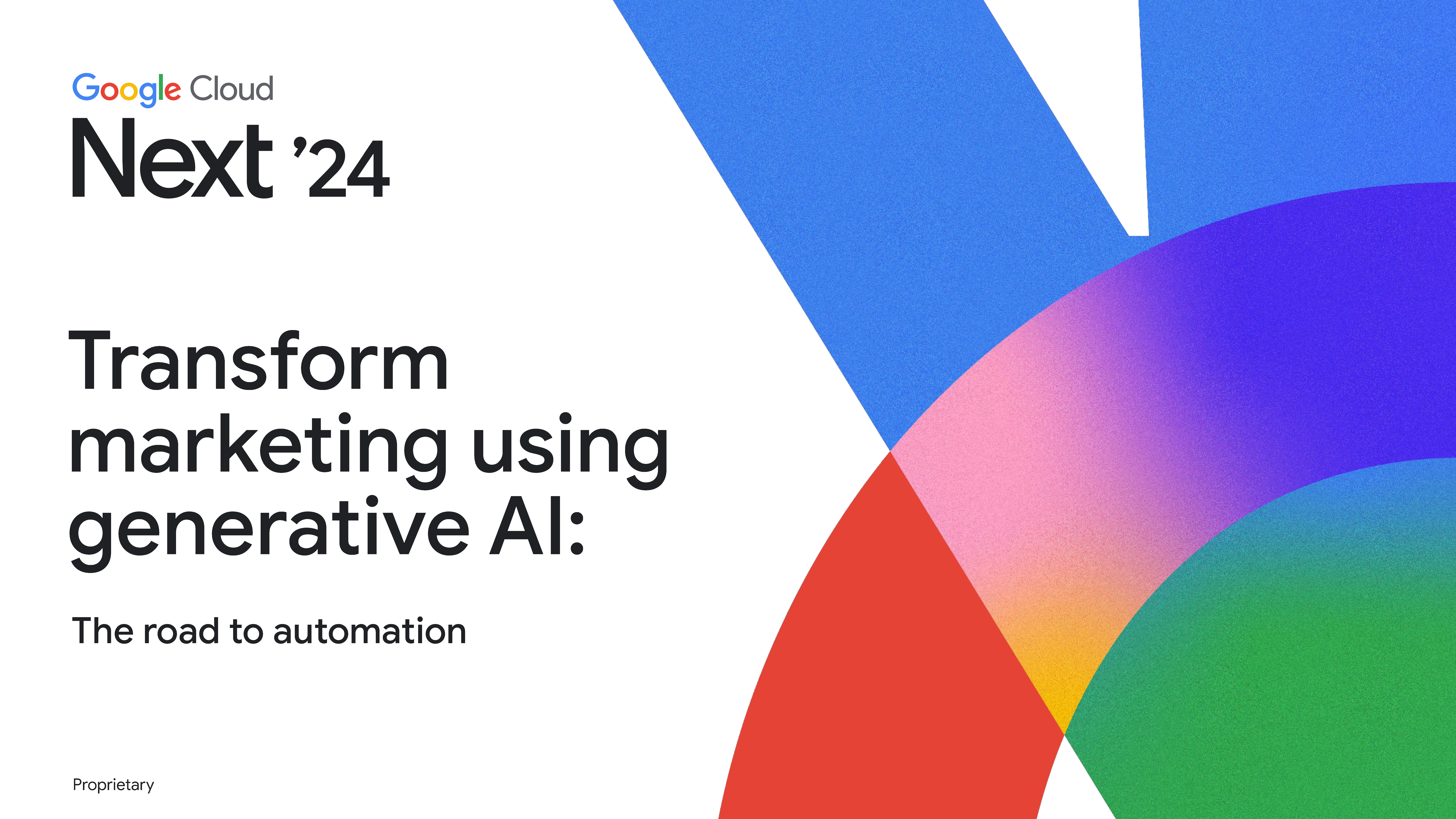
The Sky’s the Limit But Use Cases are the Target
At Google Next – and at several marketing and technology conference this year, including CES and SXSW – the clear challenge to attendees was the two-step from theoretical implementations of AI to hard use-cases that provide value to consumers (and reasons for investment). It’s no wonder companies in attendance debuted over 101 real-world use cases for generative AI, spanning applications to consumer experiences, back-end-operations, insights, and more.
Some common themes emerged as to where AI is providing the most immediate value:
- AI to accelerate the curation of essential business insights: AI21 Labs showcased how they use a BigQuery integration called Contextual Answers to allow users to query data across their businesses conversationally.
- AI to put the power of storytelling in everyone’s fingertips. Google unveiled Google Vids, a new AI-powered video creation app in its Workspace suite that can do everything from generate a storyboard, piece together first drafts of videos from stock multimedia, and do voiceovers.
- AI to bring real-time tracking to the customer experience: UPS is constructing a digital twin of its entire distribution network that will enable customers to see where their packages are at any time.

AI Will Mean a Rewriting of Every Customer Interface – Here’s Where to Begin
Artificial intelligence represents a quantum leap for creativity and productivity. As a network on the beat of marketing, we know that AI’s rise will mean a rewriting of almost all customer interfaces as companies race to deliver consumers the personalized experiences they’ve desired since the dawn of the internet. At Google Next, Stagwell CTO Merrill Raman and Stagwell Marketing Cloud CTO Mansoor Basha emphasized that the first step brands should take to reap the benefits of AI should be assessing their organization’s data infrastructure to ensure it is primed for AI.
Tactically, that may mean deep clean-up of existing first party data sources using data science best practices to get the information organized in a manner that AI can extract useful insights from. Or it may mean partnering with a third-party data provider who can supplement your view of existing and prospective consumers.
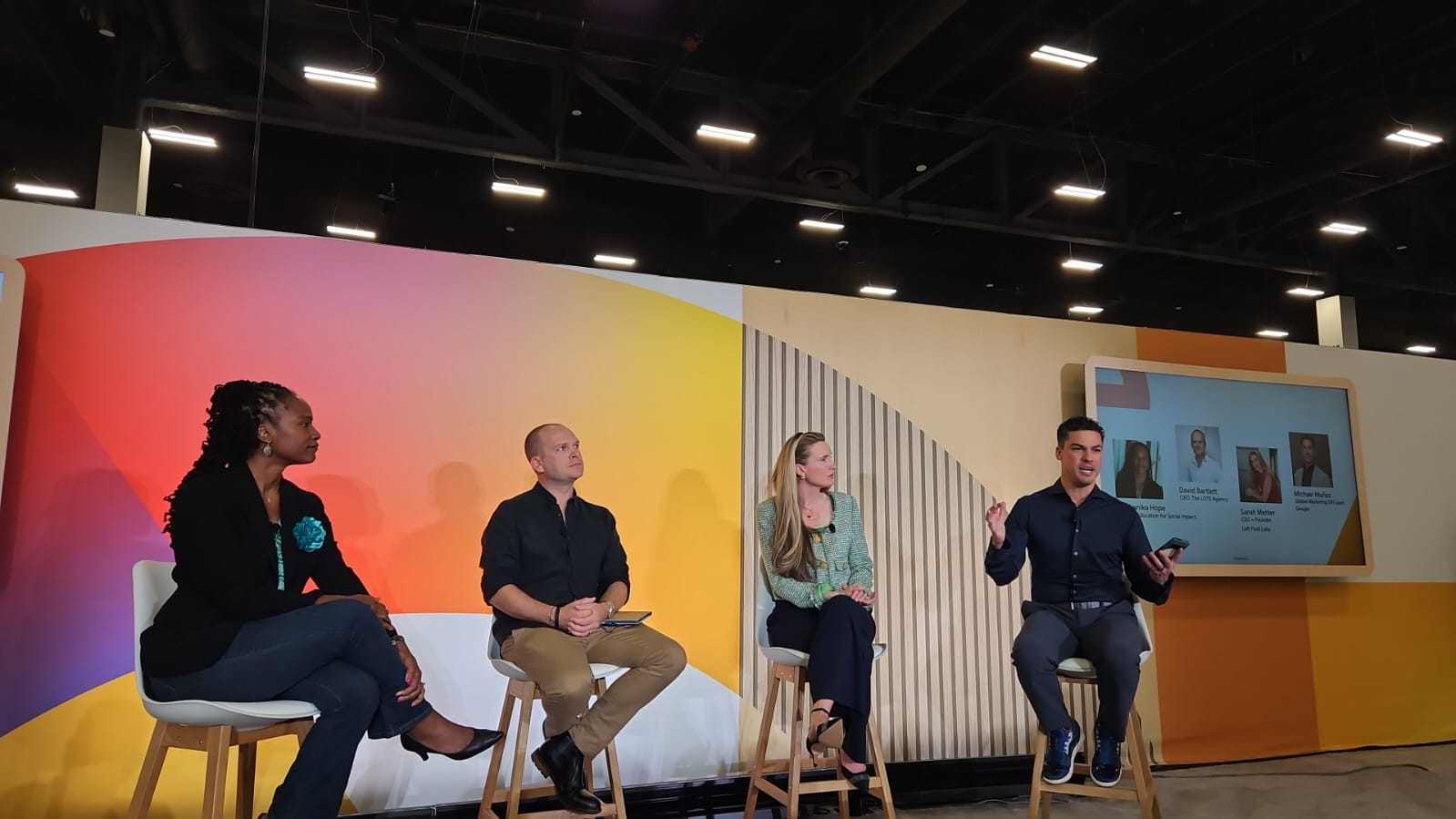
AI Can Be the Bedrock for Trust, When Implemented Appropriately
As Left Field Labs CEO Sarah Mehler shared at Google Next: with growth in AI utilization, a critical question to consider is how do we build trust with audiences when considering AI implementation? Striking the right tone in AI-enabled communications is a primary step. And remember that communication that reflects cultural and demographic nuances is what ultimately resonates with audiences and builds trust in new systems. Well-practiced organizations will apply sentiment analysis to better understand the emotions of a user and provide appropriate responses (thus driving traction and building more successful outcomes).
Attention to detail is also crucial for building trust in AI implementations. A “Chain of Verification” is one of several methods that can be employed to enhance the accuracy of information provided by AI systems. This process involves multiple steps to validate information before it is conveyed to the user. For instance, after our language model generates a response, we can employ a separate validation model to scrutinize the facts within that response. This secondary check helps to identify and correct any inaccuracies or ‘hallucinations’—instances where the model generates false or misleading information. By systematically verifying data through multiple layers, we can provide more reliable and trustworthy outputs.
Wondering where to begin with AI implementation in your organization?
Email Beth Sidhu, Chief Brand and Communications Officer at Stagwell, to discuss how we can support your organization’s digital goals.
Related
Articles
In the News, Press Releases
Jul 09, 2025
STAGWELL LAUNCHES STAGWELL MEDIA PLATFORM (SMP), A CENTRALIZED TEAM OF GLOBAL MEDIA, TECHNOLOGY AND DATA INVESTMENT EXPERTS

Artificial Intelligence, In the News, Marketing Frontiers, Press Releases, Stagwell Marketing Cloud, Tech
Jun 12, 2025
PRophet, a Stagwell (STGW) Company, Completes Integration of UNICEPTA, Launches Unified Brand and Enhanced Media Intelligence Offering

In the News, Marketing Frontiers, Press Releases, Stagwell Marketing Cloud, Tech
Jun 11, 2025
The Marketing Cloud Launches Cutting-Edge Platform to Simplify Marketing Workflows

Newsletter
Sign Up
SIGN UP FOR OUR INSIGHTS BLASTS
SXSW 2024: Pulse on Culture for the C[x]O
As an essential convergence point for marketers anticipating the future, SXSW helps businesses unveil the trends at the intersection of culture, commerce, and digital transformation that will shape a new age of consumers. As our teams emerge from SXSW, here are five consumer trends that demand attention, offering insights into what lies ahead. Connecting each trend is an opportunity to build fandom with consumers around your business.
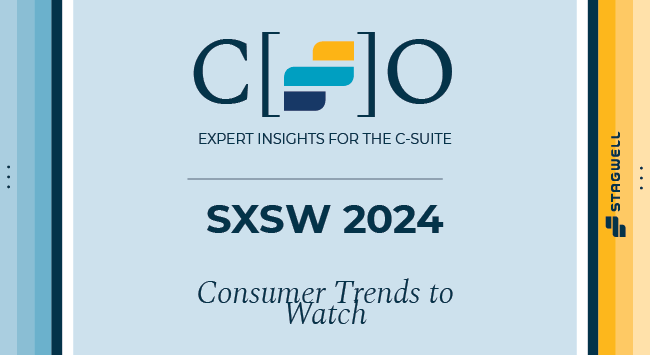
ATHLETES AS BRANDS; A NEW FANDOM HOOK?
Brandon Marshall, former 12-year NFL wide receiver and host of I AM ATHLETE, says today’s athletes are multi-hyphenate leaders – building businesses and nonprofits, and creating identities that go well beyond the field, court or track. For brands, this offers a major opportunity to write a new playbook for partnership that positions athletes as multi-dimensional ambassadors to reach consumers who are hungry for authentic connection. For Kalen Thornton, a former NFL player and current senior PepsiCo executive, the three things to consider are authenticity, connection and distinction. Authenticity is especially crucial in today’s marketing landscape; consumers appreciate genuine connection, and it can make or break whether they transition to long-term brand fans. If CMOs can build stronger partnerships with athletes that reflect that, they’re in a better place to activate athletes as brand storytellers – in turn creating fandom with customers.
Keeping up with Jarvises: The Race to Bots with Benefits
There were few explicit sessions in the advertising track at SXSW on AI – but of those on the agenda, sessions like “Navigating Advertising Hype Cycles” made it clear marketers are over the buzz, and in the mood for clear use-cases. Here’s one to noodle on. Generative AI is ushering in subtle yet impactful changes in consumer interactions with products and services. The focus extends beyond convenience; whether stated or not, we are now in an arms race to create realistic versions of popular sci-fi bots like Iron Man’s Jarvis. In this “age of anticipation,” as Code and Theory Chairman Dan Gardner calls it, brands must stay ahead by developing or integrating with the best personal assistants available to link their consumer experiences to a broader ecosystem of value. Already, we’re seeing global brands like L’Oreal and Walmart take steps to infuse AI assistants into their brand proposition, whether by providing beauty advice or enhancing moments across the retail experience. Gardner emphasizes the imminent digital transformation of customer experiences, fueled by vast data and AI’s ability to anticipate needs rather than merely reacting. This is an opportunity for every sector, and one that requires keen collaboration between CEOs and their marketing and technology leaders.
“For too long, we’ve been looking at ‘personalization’ as the answer. That was just targeting. Now, we will begin to see industries disrupted by a reimagined approach to delivering value. We are finally at the point where AI plus data can anticipate customer behaviors. This will boost sales in the near term as well as build affinity in the future,” says Gardner.
Adulthood Canceled? Gen Z’s Mid-Life Crisis as an Experiential and Commerce Opportunity
The COVID-19 pandemic triggered seismic shifts in digital transformation, giving rise to entirely new consumer behaviors and sectors. For Gen Z, already wielding significant global purchasing power, the pandemic resulted in missed rite of passage moments, impacting independence and income security. 38% of Gen Z women feel like their lives were ‘canceled,’ and 61% of Gen Z say the pandemic has increased their feelings of loneliness, per Stagwell’s Harris Poll.
At SXSW, conversations in the advertising track like “Building Brands in the Unhappiness Era” converged around the opportunity to create positive and delightful experiences for consumers – a bulwark against the bad vibes COVID left behind. Whether that’s adopting a play-centric approach to brand expression or leaning into branded entertainment, the challenge and opportunity are clear: the most active purchasing group for the next decade is eager to make up for lost time. How will brands help them conquer this opportunity? Strategies that cultivate equity and fandom by incorporating community, connection, and experience into marketing will dominate.
Navigating the New Consumer “Political Brain”
In a polarized landscape, brands risk losing support if they enter politics improperly. Activating consumers’ “political brains” divides the base and diminishes brand support. Stagwell Chairman and CEO Mark Penn says: “At best, politics splits this country 50–50. If you get involved in politics in any way, whatever your popularity is, it [gets] cut in half. For brands like targeting mass market consumers, you cannot win. You can only win if you’re a smaller niche brand that has a group of customers that would be very compatible with your values or political values, or you’ve expressed those values during a prolonged period of time, so they’re already baked into your brand.”
To insulate themselves, Chief Communications Officers must tread carefully, avoiding making consumers feel like they’re casting a vote with each purchase. They must seek, as well, counsel from perspectives across the political spectrum, acknowledging their consumers are diffuse in their ideology as well.
Beyond the ‘Shop’ Page; Will AI Transform E-Commerce?
“Brands are at a pivotal moment in time when it comes to e-commerce,” says Lauren Kushner, CEO, Kettle. “Many retailers had a booming few years followed by some softness in their conversion funnel and they are taking a hard look at how e-commerce can work harder for them. Enter tools and experiences powered by AI.”
AI is poised to elevate e-commerce by forcing brands to rethink their online interactions, moving beyond the push to a push-and-pull cycle with their customers. With tools and experiences powered by AI, brands can create contextualized and innovative online experiences that anticipate consumer needs. Hyper-personalized recommendations and streamlined purchase flows promise to forge more meaningful connections with brands and drive conversions.
Bring Community to Commerce
As Redscout CEO Ivan Kayser tells it, a modern approach to the marketing mix places community, advocacy, and content at its core. “We are just starting to dig through the rubble of the DTC reckoning, beginning to draw lessons from rule-breaking brands that are operating from a completely new playbook. Brands that are deepening value for and with their existing customers rather than focusing solely acquisition should be watched closely.” Per a new study from Assembly and Dotdash Meredith, unveiled at SoHo House at SXSW on Monday, communities provide marketers with the chance to talk, explore, and support the motivations and values that drive consumer behavior.
The balancing act moving forward is seeking strategies that genuinely benefit the business bottom line – while engaging customers in a manner that doesn’t scream transactional. While on the ground at SXSW, Kayser has been on the lookout for measurement approaches focusing on differentiation, consumer preference, and margin. And for brands that treat every aspect of the business as an expression of the brand, greatly expanding the opportunity to build fandom with each touchpoint. If you can advance short-term revenue goals while building a cohort of customers that will follow, and purchase with you, in the future, you can crack the fandom code.
Follow Along
Related
Articles
In the News, Press Releases
Jul 09, 2025
STAGWELL LAUNCHES STAGWELL MEDIA PLATFORM (SMP), A CENTRALIZED TEAM OF GLOBAL MEDIA, TECHNOLOGY AND DATA INVESTMENT EXPERTS

Artificial Intelligence, In the News, Marketing Frontiers, Press Releases, Stagwell Marketing Cloud, Tech
Jun 12, 2025
PRophet, a Stagwell (STGW) Company, Completes Integration of UNICEPTA, Launches Unified Brand and Enhanced Media Intelligence Offering

In the News, Marketing Frontiers, Press Releases, Stagwell Marketing Cloud, Tech
Jun 11, 2025
The Marketing Cloud Launches Cutting-Edge Platform to Simplify Marketing Workflows

Newsletter
Sign Up
For realtime insights, follow us on LinkedIn
Kicking off this International Women’s Day, we’re taking a look at how Stagwell and its agencies are championing women, from marathons to consent education. Below, the network spotlights impactful women-focused initiatives happening today, during Women’s History Month, and throughout the year.
Allison
Lisa Rosenberg, global partner & president of consumer brands at Allison will sit on the Culture Equity and in Women’s Sports panel at SXSW. This panel will explore the relevant media and cultural influences impacting efforts to level the playing field for girls and women in sports – from grassroots, to collegiate to professional athletes. Learn more about the event here.
Susie Hughes, EVP of Allison London sat down with PR Week to share what advice she’d give to her younger self — “Approach new challenges as opportunities, rather than as things that could go wrong. When things do go wrong – or not as expected – the details quickly fade into funny stories, and the experiences become lessons that make the next challenge easier.”
Assembly
Assembly is producing a panel at its “Metamorphosis” event on March 11th at SXSW. “Money Mavens” aims to democratize finance for the next generation of women, and will feature an all-female panel: “finfluencer” Amanda Wolfe (@Shewolfeofwallstreet), Podcast host and CEO of Scaling Retail, Syama Buntin, Founder and CEO of Wealthbuild.ai Ramona Ortega, Esq., and Editor-in-Chief of InStyle, Sally Holmes. These esteemed experts are changing the face of finance by sharing knowledge and know-how to help women clear debt, manage money, and build wealth – one investment at a time.
Assembly Europe in partnership with Goodstuff, KWT Global and Stagwell kicked off the International Women’s Day celebration with an engaging panel discussion about “The Power of Emotional Intelligence in the Workplace.” During the panel, leaders explored what it means to embrace emotions and how to leverage them for success, particularly in the workplace, in the hopes of creating awareness and fostering an environment where everyone feels supported in expressing their own emotions.
Code and Theory
This International Women’s Day, Code and Theory asked creatives and technologists to share thoughts on womanhood, their best industry advice and the change they’d like to see. Explore what female leaders within the agency had to say here.
Crispin Porter + Bogusky London
One in five UK adults think ‘no’ can mean ‘yes’ when it comes to sex – to address national confusion on consent, CPB London launched the “I’m Asking For It” campaign in partnership with Right to Equality. This multi-agency effort led by CPB London, Assembly Europe, Goodstuff and KWT Global raises awareness for consent and asks individuals to join in demanding the UK adopt the Affirmative Consent Standard.
GALE
GALE, Vox Media, and MilkPEP announced an expansive media partnership focused on spotlighting female athletes. The contract is an extension of a longstanding partnership with MilkPEP which aims to break the coverage gap in sports and elevate female athletes of all levels along the way. To celebrate the launch, the companies hosted an inspiring run for allies at SXSW, followed by a panel discussion.
KWT Global
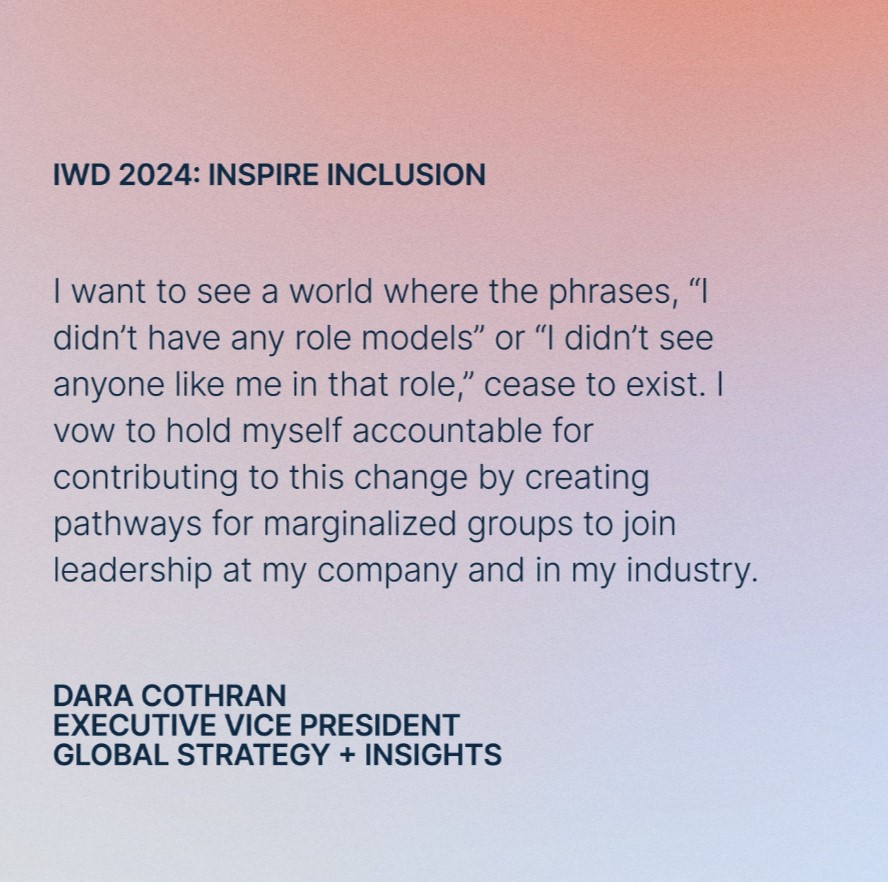
KWT Global asked women within their organization to share their take on what ‘inspiring inclusion’ means. Envisioning a world free of bias, stereotypes, and discrimination – a world where diversity, equity and inclusion are top of mind, female leaders share their vision for the future.
Left Field Labs
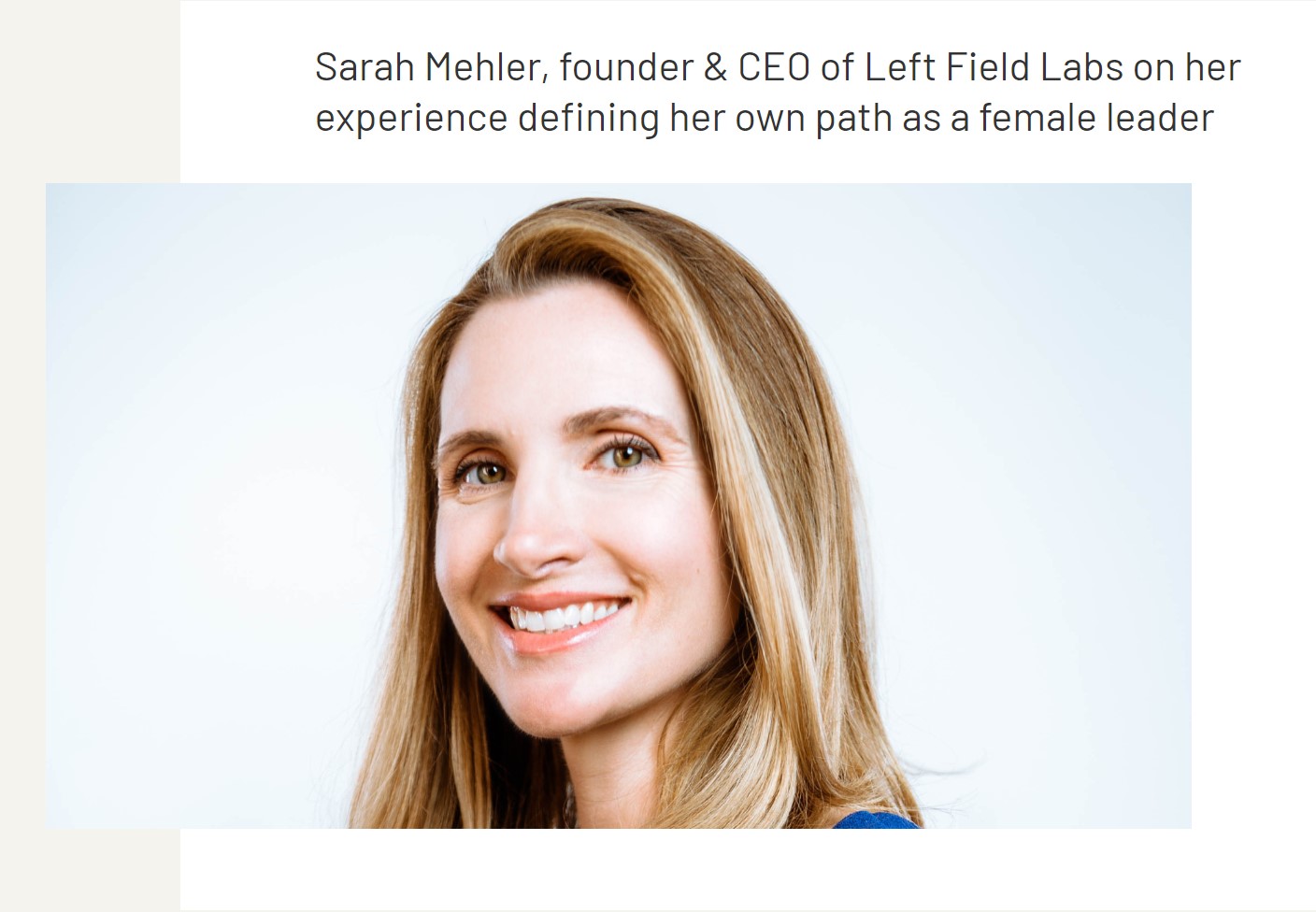
Sarah Mehler, founder and CEO of Left Field Labs authored a piece, “Inspiring Disruption: Women Redefining Authentic Leadership,” featured in Little Black Book. Mehler shares career advice and reflects on her experience defining her own path as a female leader.
“On this International Women’s Day, let us celebrate the strides we have made towards a more inclusive and humane approach to leadership and technology. Let us also renew our commitment to being agents of change, pushing forward with courage and a deep belief in the power of human connection.”
Stagwell
This month Stagwell is introducing a new series called “The New Class of Female Leaders at Stagwell,” where it will spotlight the women who have either been recently elevated to CEO roles or who have joined the network as CEOs of newly acquired agencies. These leaders bring a wealth of expertise and fresh perspectives to the table across cultural marketing, emerging technology, immersive experiences and design, product development and more.
Related
Articles
In the News, Investments & Financials, Press Releases, Talent & Awards
Jul 08, 2025
Stagwell (STGW) Advances Executive Team with Four Key Appointments

In the News, Press Releases, Thought Leadership
Jun 10, 2025
Stagwell (STGW) Chairman and CEO Mark Penn to Discuss the Irreplaceable Power of Human Creativity on the Main Stage of Cannes Lions

Events, In the News, Press Releases, Talent & Awards
Jun 05, 2025
Code and Theory Named ANA B2B Agency of the Year After Transforming the World’s Leading Brands








